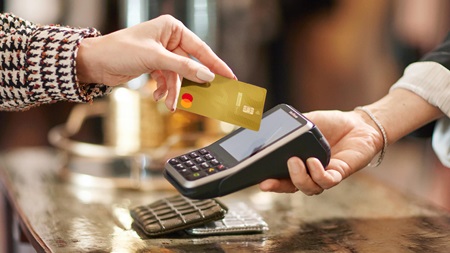Tips to Be Safe
-
Using your card in a shop, restaurant or ATM
Be safe when you use your card in a shop, restaurant or ATM
- You should be the only person who knows your PIN.
- Be aware of your surroundings when you withdraw money.
- Never let others withdraw money through your card – you could end up as money mule.
- Always cover the keypad when you enter your PIN.
- Never give out your card information or give your card to somebody else.
- Never let your card out of sight when you make a purchase.
- Reduce your spending limit for your payment card and cash withdrawals. You can reduce the limit in your Danske Mobile Banking or Danske eBanking.
-
Making payments and transfers
Be safe when you make payments and transfers
- Before you approve the transaction, check that all the details (e.g. bank, account and country information) actually are as you expect once you have filled out all the transfer information.
- Never make a payment or transfer that you feel insecure about.
- If someone contacts you by email, text message or phone call telling you that you should make an urgent transfer or move your money from one account to another, it may be an attempt at fraud. Do not respond and contact Danske Bank on +45 70 123 456 if you are in any doubt.
- Reduce the maximum amount you want to transfer per payment and/or per day using Danske eBanking: select account à terms and settings à settings à change your limits.
- Read more about payments and transfers to ensure that you make them securely and correctly.
-
Shopping online
Be safe when you shop online
- Reduce the risk of fraud online by authenticating your purchases with NemID/MitID. Read more about making secure online purchases.
- If you need to visit a website, you should type the web address directly into your browser’s address bar rather than clicking on a link you have been sent – unless you have verified that the link is genuine.
- Check that Danish retail websites are labelled with the e-mærket certificate. You can verify that a Danish online retailer is genuine by checking it on emaerket.dk.
- Check that the retailer’s website also lists a physical address, email address and telephone number. If there is no contact information, the online shop may be a scam.
- Be wary if the language used on the website is poor and full of errors, or if the prices are listed at odd amounts (e.g. DKK 387,67).
- Check reviews on Google or Trustpilot etc.
- Read more about online shopping fraud and be safe when shopping online.
-
Spotting an unusual transaction
Keep watch for unusual transactions on your account
- Regularly check your transactions in Danske Mobile Banking or Danske eBanking to keep watch for any suspicious transactions.
Read more here about how to check account balances and view your payment history - Contact your bank immediately if you spot any unusual transactions. Read more here about how to behave if you discover unauthorised use of your card.
- Block your card if you suspect any form of fraud or misuse of your card. Read more here.
- If there are transactions on your account that you do not recognise or accept, you should submit a card dispute. Read more here about submitting a card dispute.
- Regularly check your transactions in Danske Mobile Banking or Danske eBanking to keep watch for any suspicious transactions.
-
Receiving emails, text messages and phone calls
Stay vigilant when you receive emails, text messages and phone calls
- Never reveal financial information such as your card details.
- Never share personal information such as your NemID/MitID information with anyone else.
- Never open unsecure links or attached files. Always double-check the domain name of the website. If the URL of the website includes unusual numbers, symbols and strange words, you need to further check the authenticity of the website.
- Beware of poor spelling or grammar, and double-check the authenticity of the sender. If a message says it is from Danske Bank but you think it may be suspicious, you should contact us by calling us on our publicly available phone number or via the secure communication channel in Danske Mobile Banking and Danske eBanking.
- If you have any misgivings about an email or text message, you should delete it immediately. If it claims to be from a sender who you know, contact that person directly on the phone number you would normally use – do not use the number given in the email or text message.
- Read more about fake emails, text messages and fake phone calls.
- Use Forbrugerrådet Tænks app ‘Mit digitale selvforsvar’ (in Danish only) to check which scams are currently circulating.




